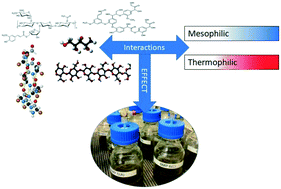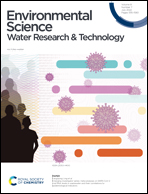Characterizing the influence of wastewater composition and lignin content on anaerobic biodegradability†
Abstract
Wastewater composition directly impacts its anaerobic biodegradability, affecting methane production rates, the concentration of effluent products, and ultimately, the overall energy output and treatment efficiency of the anaerobic digestion system. Yet, the factors that determine the overall anaerobic biodegradability of the influent waste stream, or the fraction of organic matter converted to methane and biomass, are not entirely clear. In this study, we reviewed the main aspects limiting the overall anaerobic biodegradability of complex wastewaters and characterized the methanogenic biodegradable fraction (i.e., the fraction of organic matter converted to methane) of the main organic constituents of influent streams while assessing the role of lignin content and the influence of temperature. Also, we evaluated the feasibility of predicting the methanogenic biodegradable fraction of manure-based co-digestion streams based on their composition. Our study showed that proteins, lipids, lignin-free cellulose, and sugars are highly biodegradable, while starch and hemicelluloses are only partly biodegradable, particularly at mesophilic temperatures. Hydrolysis is the limiting factor for the biodegradability of particulate influents, while inhibition is such for lipids and proteins, particularly under thermophilic conditions. Lignin content alone was highly correlated with a decrease in the methanogenic biodegradable fraction of lignocellulosic influents at both temperatures, but hydrolysis constants were primarily dependent on other fiber constituents, confirming previous studies. Constituent-specific methanogenic biodegradable fractions were coupled with an empirical lignin-based model to successfully predict the methanogenic biodegradable fraction of manure-based co-digestion streams. When the characterization of the influent stream is available, the models and data reported in this study can be used to predict the methane potential of simple or complex wastewaters, including those containing lignin, such as those derived from the pulp and mill industry and farm-based anaerobic co-digestion systems, without the need for lengthy BMP assays.



 Please wait while we load your content...
Please wait while we load your content...